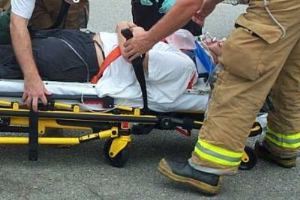What Exactly is a “broken back?”
The general description “broken back” can be applied to so many different types of spinal injury-ranging from the unnoticeable to the severe-that it doesn’t say much about what’s actually happened. Technically, a broken back describes a medical condition where the vertebrae have become dislocated or fractured at any place on the spinal column. The placement of the injury along the spinal column also has a significant impact on what sort of disability may be incurred.
A broken back may consist of a relatively mild fracture of the back part of the spine (such as the spinous process or facet joints), which may cause little discomfort and disability. Alternately, it may involve a major break to the front part of the vertebrae (such as the pedicles or lamina) that are responsible for supporting the body’s weight and which may cause the spinal cord itself to be injured, resulting in possible paraplegia or quadriplegia. 
Many people have minor spinal fractures, especially as they grow older. A series of minor traumas to the spine or the onset of osteoporosis can contribute to the slow degeneration of the vertebral discs, leading to what is often referred to as “dowager’s hump.” These types of fractures can cause pain ranging from no pain at all to feelings of chronic discomfort or pain in the back. Although they may be a source of chronic pain, minor fractures do not usually interfere significantly with your ability to move or walk. If you are a new patient to visiting a chiropractor you can download new patient forms here.
Major spinal fractures or breaks are more serious. These are usually the result of a sudden trauma to the spine, such as diving into a pool and hitting your head on the bottom, falling from a horse or being in an auto accident (the most common cause). In these cases, the spine may become dislocated or entirely broken, putting pressure on the spinal cord, or even partially or completely severing it. Depending on the extent of the spinal cord damage, paralysis may result. Damage to the spinal cord in the area of the seven cervical vertebrae can result in quadriplegia, whereas damage to the rest of the vertebrae below this point can result in paraplegia. In general, the higher up the spinal cord the injury occurs, the greater the possible paralysis.
If you believe that someone may have sustained a spinal injury, it is important that you do not move the person at all unless it is absolutely necessary. Keep the person as immobile as possible until medical help arrives. If the person must be moved, try to get help from another person so one of you can turn the body while the other supports the head and neck and keeps it in constant alignment with the rest of the spine as the body is moved.
A broken back can be a serious injury, but in most cases with proper management, it does not have to cause permanent disability.
